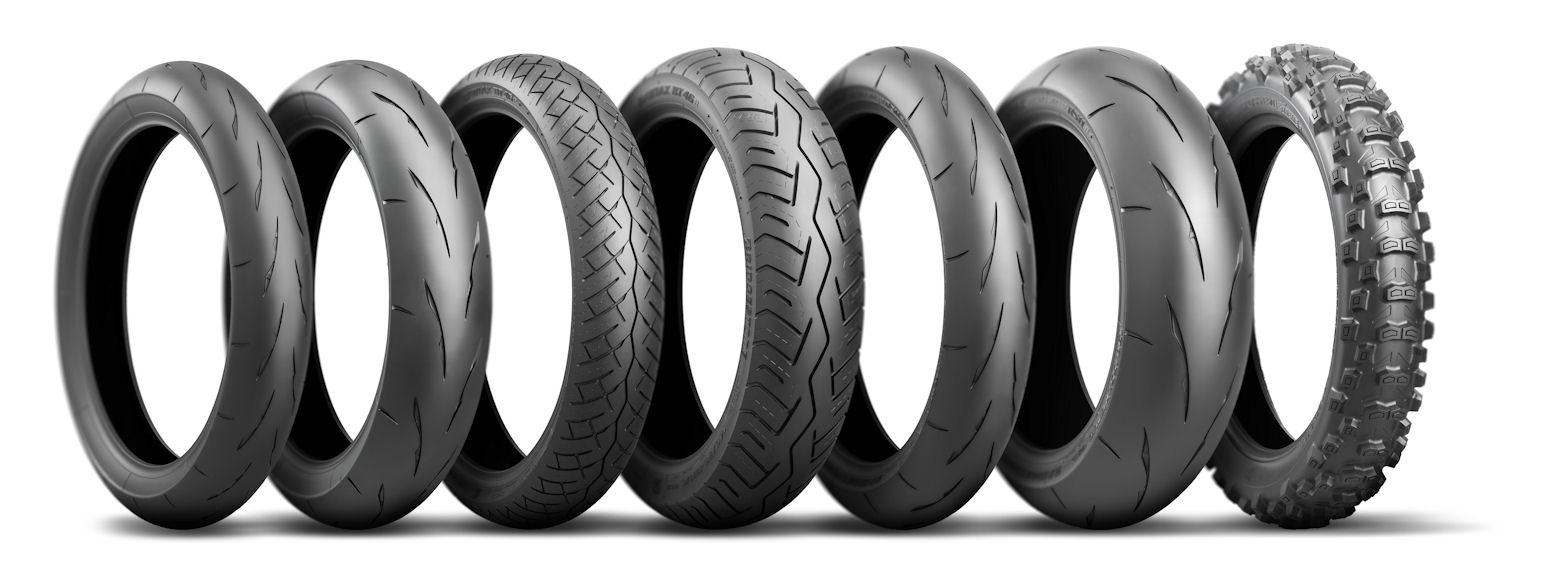All About Bike Tyres: A Comprehensive Overview for Fanatics
For motorcycle lovers, comprehending the intricacies of their device's tyres is a vital element commonly neglected. This guide, 'All About Motorcycle Tyres', opens the complex world of tyre types, dimensions, and specifications, all straight impacting performance and safety and security.
Comprehending the Essentials: Different Kinds of Bike Tyres
In the world of motorcycling, tires play a pivotal duty, not only in making certain a safe adventure but additionally in improving the overall performance of the bike. They can be found in different types, each created for specific riding conditions and efficiency requirements.

After that there are dual-sport tyres, which use a balance in between on-road stability and off-road grasp. Racing tires, utilized for track auto racing, give maximum hold but have a really brief life-span.
Comprehending these kinds and their details attributes assists cyclists choose the ideal tyre for their riding style and problems, thereby guaranteeing optimum efficiency and safety and security. Such understanding develops the foundation before delving into tyre sizes and specs.
How to Decipher Your Motorbike Tire Dimension and Requirements
Having a strong understanding on the various types of motorcycle tyres leads naturally to a much deeper understanding of their dimensions and requirements. The tire's dimension and specifications are usually indicated on the sidewall. The 2nd number, complying with a reduce, is the element ratio or the elevation of the tire's sidewall revealed as a percent of the size.
Such complex details can dramatically influence a bike's efficiency. Therefore, it's important for cyclists to understand just how to decipher their bike tyre size and specifications.
Selecting the Right Tire for Your Riding Style and Problems
Choosing the ideal tire for your motorcycle is not a decision to be ignored. It's essential to take into consideration the type of riding one does frequently; whether it's travelling, touring, off-roading, or sporting activities riding, each design demands a different kind of tire. Sport bikers may choose for efficiency tires that supply excellent grip and speed, while commuters may like tires made for durability and comfort.
For damp and snowy problems, tires with deep step patterns and softer rubber substances are suitable as they give better grip and grip. Inevitably, understanding your riding style and the problems you'll encounter aids in picking the right tyre, enhancing both security and performance.
Tips for Preserving Your Bike Tyres for Optimum Performance
Effectively preserving your motorbike tyres significantly increases their performance and durability. Normal inspection is a vital part of this procedure. Bikers should seek indicators of deterioration, such as cuts, punctures, or unequal wear patterns that might suggest alignment problems.
Cleaning is one more essential element of tire maintenance. Removing particles and gunk not only improves the tire's appearance but also protects against premature wear. A find mild scrub with a soft brush and soapy water is typically enough.
The role of tire turning can not be discounted. By rotating the tires' settings, one can ensure even put on and extend their life expectancy.
Finally, the motorcyclist needs to always check the tyre's step depth. A shallow step can compromise hold, bring about risky riding problems. To this end, numerous nations have lawful minimum tread depths, and motorcyclists are urged to follow these policies for safety and security.
The Influence of Tyre Pressure on Your Riding Experience

Understanding Tyre Stress Characteristics
While it might seem an unimportant aspect to some, tire stress plays an important duty in the total riding experience of a bike. Motorbike Tyres. It affects traction, dealing with, fuel economic situation, and ride comfort. Over-inflated tyres can make the trip extreme and rough, while under-inflated tyres can lead to poor handling and enhanced gas intake. Tire stress also impacts the tyres' contact patch - the location of the tyre that touches the ground. A larger contact patch results in better grasp yet likewise quicker tyre wear. Conversely, a smaller call spot may prolong tyre life however concession on grip. Comprehending these dynamics can help riders make educated choices regarding tyre stress, improving both performance and safety and security.
Changing Pressure for Efficiency

(Road Bike Tyres NZ)The suitable stress differs with tons, road problem, and riding design. For ideal performance, it's crucial to get in touch with the maker's recommendations, generally engraved on the motorcycle or in the proprietor's handbook.
Routine checks using a dependable stress scale are crucial. As weather impacts stress, adjustments need to be made when tyres are cool. Hence, understanding and applying appropriate tire stress adjustments significantly improve a biker's experience, advertising security and efficiency.
When and Exactly how to Change Your Motorbike Tyres Securely
Ensuring the security and efficiency of your adventure, regular analysis and prompt substitute of bike tires is a job of utmost importance for every biker.
Tyres ought to typically be changed every five to six years, or when the walk deepness gets to 2mm. Factors such as driving habits, road problems and tire upkeep can influence this timeframe. It's important to consistently evaluate tires, seeking indicators of damage, leaks or deformities.
Replacing a tyre calls for unique devices and understanding. Firstly, the motorcycle ought to be securely elevated. Complying with deflation, the old tyre can be removed by loosening up the axle nut and gliding the wheel off. The brand-new tyre has to be appropriately aligned and inflated to recommended pressure.
It is commonly advisable for much less skilled riders to have actually tires replaced by professionals. This makes sure security and maximises efficiency, emphasizing the importance of tyre upkeep in motorcycle usage.
Final Thought
Finally, recognizing the ins and outs of motorcycle tires, from kinds to size specs, plays a vital duty in improving riding experiences. Making informed options based upon riding design and conditions, coupled with appropriate upkeep and recognition of tire stress, can considerably boost efficiency and safety. Knowing when and how to change tires makes sure bikers can proceed to appreciate their bike experiences with the utmost confidence.